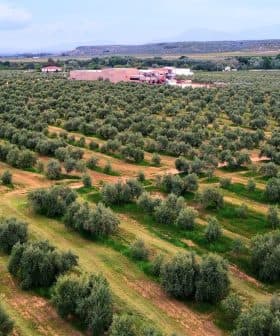Mushrooms, Pepperoni and Benzopyrene
Americans consume a large amount of pizza, with pepperoni being the most popular topping. Many pizzerias use olive pomace oil, which is a low-grade oil that can contain harmful components, raising concerns about the quality of ingredients used in making pizza in the United States.

Americans love pizza. There are 70,000 pizzerias in the States cranking out over 15 million slices every day with annual sales of more than $35 Billion.
A Department of Agriculture study found that in a three-day period, 42 percent of children between the ages of 6 and 11 had eaten pizza. How long has it been since you (or your child) has had a slice?
Pepperoni is the most popular topping, followed by mushrooms and “extra cheese.” Some people ask for “extra tomato sauce,” or a “thin crust” (especially here in New York). In Chicago, a thick crust is standard.
There’s one more component that no one orders, nor even knows about, yet it’s an ingredient most pizza makers use liberally: oil. Notice I didn’t say “olive oil,” because what goes on a lot of our favorite pizza can’t legally be called olive oil.
At the side door of my local pizzeria each morning there is a huge pile of firewood to be burned that day in wood-fired ovens that impart a delicious, smokey flavor on the pies.
Behind the counter the dough is hand-stretched and laid out on a marble slab powdered with flour. Then the cook dips a large ladel into a bowl and swirls what might be three-quarters of a cup of oil around the big, uncooked shell before another ladel of tomato sauce follows.
I asked the man what kind of oil he used. He looked back and relayed the question in Arabic to his colleague who shrugged and replied “the same that we use in the deep fryer.” I asked to see the tin.
It was olive pomace oil.
The International Olive Council, the intergovernmental olive oil organization responsible for outlining quality standards and monitoring olive oil authenticity, defines olive oil as “oil obtained solely from the fruit of the olive tree, to the exclusion of oils obtained using solvents or re-esterification processes.”
After pressing olives into oil, what’s left is the residue called pomace: the solid remains of the olive including skins, pulp, seeds, and stems. There is such a little amount of oil left in the pomace that it cannot be extracted by pressing, but only through industrial refining including the use of chemical solvents (like hexane), extremely high heat and deodorization.
They are the same high-heat processes used in refining canola, sunflower, and other vegetable oils, and they are why unregulated olive pomace oil sometimes contains harmful components known as polycyclic aromatic hydrocarbons (PAHs) like benzopyrene, which research has shown to be highly carcinogenic and mutagenic. In 2001, after extremely high levels of PAHs were detected, olive pomace oil was banned in several countries for a while until “acceptable” limits were established.
On the website of the foodservice company Pastorelli, you can see why pizzeria owners might choose olive pomace oil over other grades: “Our Italian Chef Pomace Oil is a flavorful oil whose fruitfulness is derived from select Mediterranean olives. Appetizing to the palate and excellent for use on salads, cooking or in your favorite recipes.”
The confusing information is in turn provided to consumers. On the website of the University of California at Berkeley there’s a listing of the ingredients in the Italian sausage pizza served to students in the cafeterias. “Extra Virgin Olive Oil” is listed, but notice how it’s defined:
That’s like saying: Fresh-squeezed orange juice (a blend of juice extracted from leftover pulp, rinds and pits with the use of chemicals and solvents, with fresh squeezed orange juice). Of course extra virgin olive oil cannot contain any pomace oil at all according to the USDA and every olive oil standard ever written.
A restaurant foodservice professional confirmed that the oil he sells the most to pizza restaurants was olive pomace oil, and you can find plenty of websites that list olive pomace oil as a pizza ingredient, like this one in Raleigh, North Carolina.
It could be worse. If you order a pizza from one of the 9,000 Dominoes stores, your oil will be hydrogenated soybean (though only within the crust, not poured on top).
It could be better. If you watch an artisanal pizza being crafted in the South of France, Italy, or Greece you’ll see a thin dough coated with a green extra virgin olive oil, and a few other fresh ingredients.
Olive oil, in all its forms is a food most Americans don’t yet understand. Pizza makers aren’t out to cut corners, they simply don’t know the difference and neither do their customers. Of course that’s how low-grade oil producers and marketers like it.
On the Santini foodservice website the message is clear: “The high impact ‘old country’ graphics on our tins make our oil a great choice for kitchens in the back of the restaurant or up front where your clientele can see the quality ingredients you’re using to make their dishes.”
Pizza should be a healthy food. In America it is too often made from low-grade or unhealthy ingredients — including olive pomace oil. The next time you order out, or head down to your corner pizzeria, ask what kind of oil they use.
See also:
Only Extra Virgin Olive Oil at Rome’s Forno Campo de’ Fiori
Forno Bravo Pizza Ovens: Olive Oil for Pizza
Olive Pomace Oil: Not What You Might Think




